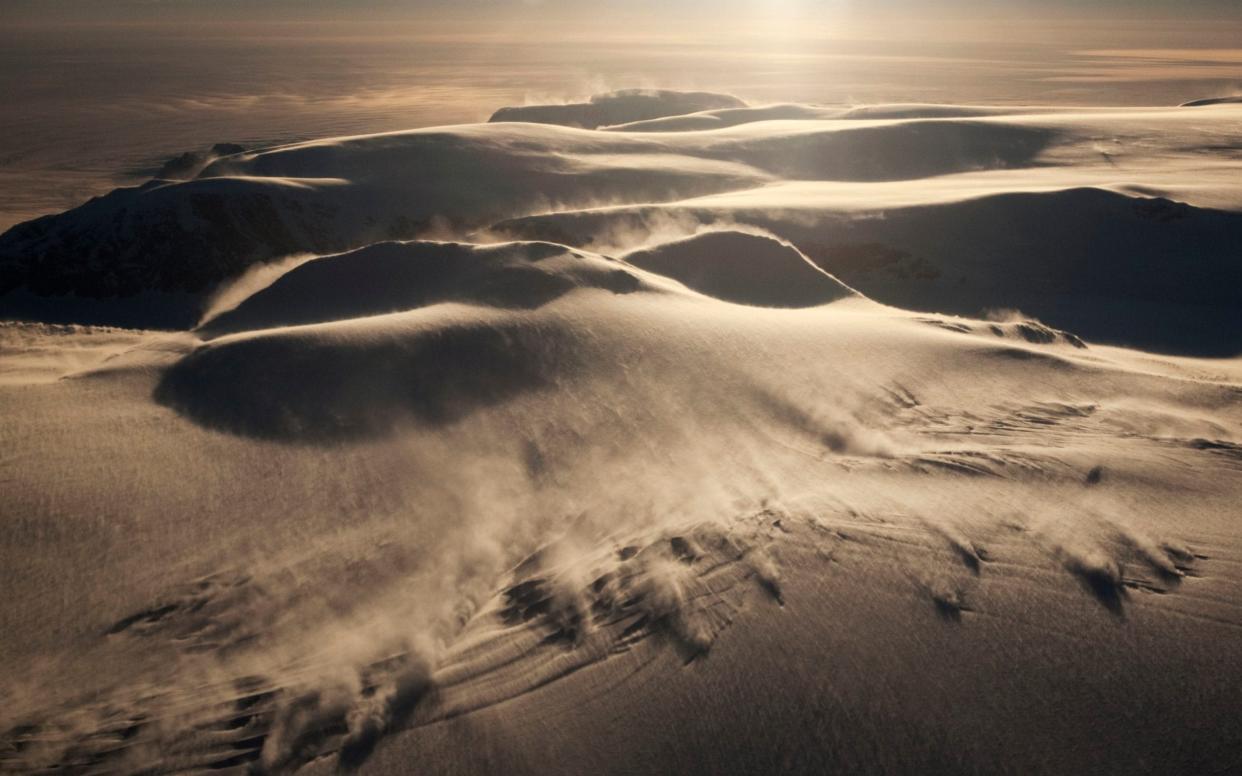Huge Antarctica ice shelf at risk of collapsing

One of the largest ice shelves in Antarctica is at risk of collapsing due to warm mountain winds, scientists have said.
The Larsen C ice shelf, which is a floating mass of ice hugging the coast of the Antarctic Peninsula, is melting at a faster rate due to strong and gusty winds, known as foehn, according to the team.
Foehn winds occur when air passes over mountains, dropping most of its moisture on the ascent, before descending and picking up heat along the way.
The researchers said these warm winds are a result of ozone depletion and increasing greenhouse gas concentrations.
Larsen C is currently experiencing the highest surface melt rates across Antarctica.
The experts said their findings, which are being presented at the annual meeting of the European Geosciences Union on Thursday, offer the first comprehensive explanation for the melt experienced across the ice shelf.
Dr Andrew Elvidge, a senior research associate at the University of East Anglia's School of Environmental Sciences, said: "Our study has shown that the dominant control on Larsen C surface melt is the occurrence, strength and warmth of foehn winds, and that the most intense foehn-driven melt occurs in embayments, or inlets."
Since the mid-1990s, parts of the Larsen Ice Shelf have collapsed: Larsen A disintegrated in 1995, followed by Larsen B in 2002.
In 2017, a large section of the Larsen C Ice Shelf broke away, producing an iceberg the size of Luxembourg.
Dr Elvidge said previous studies have shown that these icy regions are now prone to melt water ponding - pools of open water that form on sea ice.
This open water then causes fractures in the ice "when crevasses are driven open by the weight of water generated by surface melt".
Dr Elvidge said this mechanism is believed to have caused the catastrophic collapses of Larsen A and B.
He added: "Foehn-driven melt on Larsen C is likely to increase in the future, with further strengthening of the circumpolar winds expected due to increasing greenhouse gas concentrations.
"The collapse of ice shelves causes the glaciers that previously fed them to speed up and drain directly into the ocean, which leads to sea level rise."
The researchers, collaborating with scientists from Utrecht University in the Netherlands and the British Antarctic Survey, used measurements of the ice shelf and atmosphere gathered between November 2014 and June 2017.
They found that the inlets of Larsen C experience the highest melt rates, with foehn winds accounting for 45% of the surface melt.
Dr Elvidge said: "This region is one of the fastest-warming on Earth and currently experiences the highest surface melt rates across Antarctica.
"Further work with weather and climate models is needed to improve predictions of the timescales on which Larsen C will become vulnerable to atmosphere-driven collapse."

